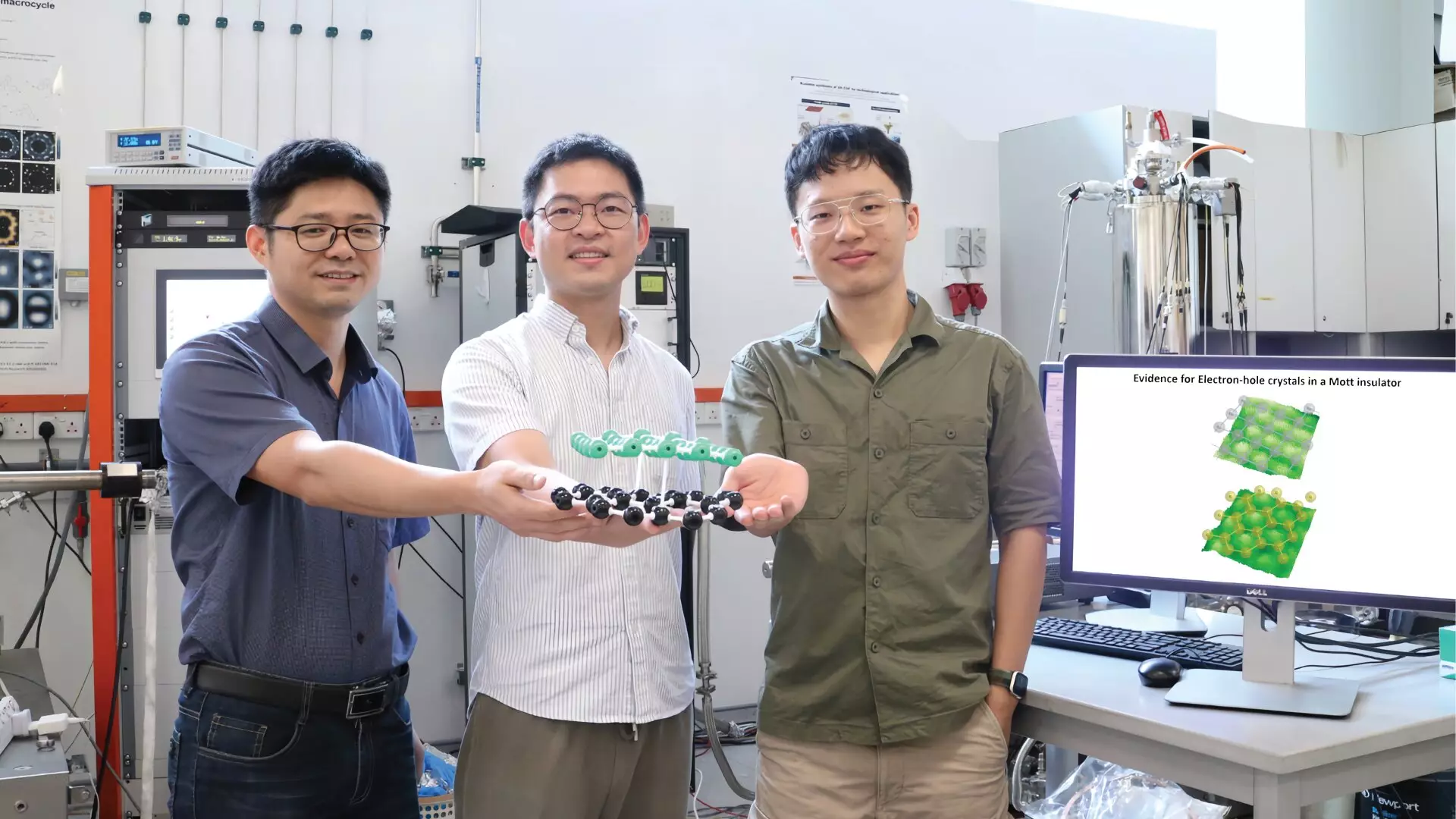In the intricate tapestry of quantum materials, the interplay between electrons and their positive counterparts, known as holes, has captivated researchers for years. When the number of electrons aligns perfectly with the lattice sites in a material, these particles exhibit collective behavior, organizing themselves into a coherent structure called an electron crystal. This phenomenon is not merely an academic curiosity; it holds immense potential for the advancement of quantum simulations, offering glimpses into the future of technology.
Electrons, when harmonized with holes, can orchestrate the creation of exotic quantum states, which may include groundbreaking properties like counterflow superfluidity. In this remarkable state, electron-hole pairs flow in opposite directions with zero resistance and no energy dissipation, a dream scenario for energy-efficient technologies. However, the challenge lies in maintaining the stability of these electron-hole crystals; they often recombine if not properly isolated.
To circumvent this obstacle, scientists have resorted to innovative methods, often layering different substances to create an environment conducive to these delicate interactions. Yet, despite the promise of multi-layered configurations, the quest for stable electron-hole states within a singular, naturally occurring material continues to evade conclusive demonstrations. The complexities of electron dynamics in quantum materials create an urgent need for new experimental data, fostering ongoing debates within the scientific community.
A Breakthrough in Mott Insulating Materials
Recent advancements from a research team at the National University of Singapore (NUS) have shed light on this elusive quest. They have successfully created and visualized electron-hole crystals within an exotic quantum material known as a Mott insulator, specifically Alpha-ruthenium(III) chloride (α-RuCl3). This finding is groundbreaking, as it may establish a new frontier in our understanding of quantum excitonic states, ushering in a new era of computing technologies that could redefine the limits of in-memory and quantum computing.
The team, under the leadership of Associate Professor Lu Jiong from the Department of Chemistry and the Institute for Functional Intelligent Materials, collaborated closely with notable figures like Professor Kostya S. Novoselov. The publication in *Nature Materials* on June 3, 2024, offers compelling insights into the atomic behavior of these quantum crystals, heralding a significant step forward in materials science.
Illuminating the Invisible: The Role of Scanning Tunneling Microscopy
One of the pivotal techniques enabling this remarkable discovery has been scanning tunneling microscopy (STM), a powerful technology that images materials at the atomic level using quantum tunneling principles. While it has traditionally been limited to conductive materials, the research team ingeniously circumvented this limitation by integrating graphene with α-RuCl3. Graphene, with its singular atomic layer of carbon, not only serves as a conduit for electrons but also functions as a tunable electron source, facilitating controlled interactions with the Mott insulator beneath.
The synergy between graphene and α-RuCl3 allows researchers to probe the Mott insulator’s electronic structure and visualize two distinct ordered patterns at varying energy levels, notably the lower and upper Hubbard band energies. Each of these states displays unique periodicities and symmetries, paving the way for unprecedented insights into the behavior of electron-hole crystals. Utilizing electrostatic gating, the researchers have demonstrated how tuning carrier densities can actually depict the transformation of these orderings, fundamentally altering our perception of electron-hole relationships.
The Surprising Emergence of Dual Orderings
One of the most surprising outcomes highlighted in this study is the simultaneous emergence of two distinct ordered patterns within the system. As Associate Professor Lu Jiong noted, prior expectations suggested that when a Mott insulator is doped, new charge orderings may be expected; however, the concurrent presence of dual orderings was unexpected. This revelation suggests that the formation of electron-hole crystals occurs under conditions previously thought impossible, further emphasizing the intricate dynamics of electron and hole coexistence.
This research not only provides clear atomic-level observations of these electron-hole crystals but also raises intriguing questions regarding their distribution. The clarity of the images allows for the realization that these crystals do not exist uniformly; rather, they demonstrate variance in density, with an imbalance between electron and hole populations impacting their formation.
Paving the Way for Next-Gen Computing Technologies
Looking toward the future, the implications of this discovery are profound. Associate Professor Lu envisions exploring the control of these crystals via electrical signals, potentially inventing new methods to manipulate material states rapidly. The realization of stable electron-hole crystals in doped Mott insulators could catalyze breakthroughs in creating materials capable of rapid state-switching, a crucial attribute for developing advanced computing systems.
Moreover, the application of these materials extends into realms beyond traditional computing, including the emulation of complex quantum phenomena. The tantalizing prospect of simulating quantum physics with newly discovered materials hints at an innovative path forward for researchers and technologists alike, marking a significant milestone in our pursuit of harnessing the complexities of quantum mechanics. The door is now ajar, inviting further inquiries into the astounding capabilities of electron-hole crystals and their role in shaping the future of technology.


Leave a Reply